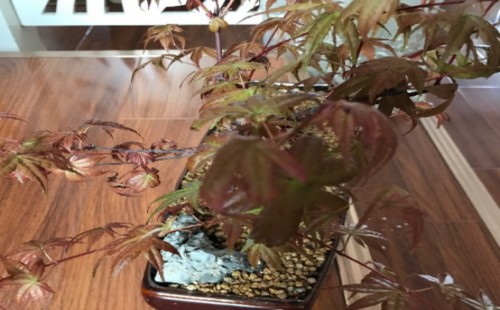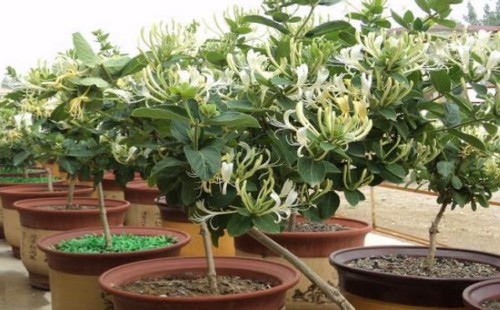Culture methods and points for attention of Taxus mairei bonsai
Taxus mairei is a kind of high quality tree species in landscaping with good greening and beautification effect. At the same time, because of its easy modeling and strong appreciation, it is often used to make high-grade bonsai masterpieces after dwarfing treatment, and keeps it green all the year round, with multiple ornamental effects of considerable stems, branches, leaves and fruits, elegant and noble. So, how to raise yew bonsai? Today, the editor will share with you the breeding methods and matters needing attention of yew bonsai.

Although the yew is also an evergreen tree, it is different from many other bonsai trees in appearance. The trunk of the yew remains upright, the plant shape is very beautiful, and the leaf color is also dark green all the year round, so the bonsai made is naturally of high ornamental value. However, the yew prefers a cool growth environment, which is not only resistant to drought, but also extremely resistant to cold, and can even be kept safe and sound at the temperature of-30 °C, but the best growth temperature is between 20 °C and 25 °C. like the sandy soil environment with good permeability. If we manage according to the characteristics of these habits, we can raise them well.
1. Soil
Taxus prefers a fertile, loose and humus-rich acidic soil with a pH between 5 and 6.5. As a kind of bonsai cultivation, the mixed soil made of peat soil, perlite, rotten leaf soil and ordinary loam is generally used. Of course, only loam can be used for planting, but in the later stage, topdressing is needed to improve soil fertility.
Second, lighting
Taxus likes cool growth environment and is afraid of high temperature and hot sun, so when the summer temperature rises, measures should be taken to shade and avoid the sun in time, and it is recommended to move it to indoor maintenance. However, it can not be placed at the air outlet of the air conditioner or where the sunlight can often be directed to, and at the same time, more water can be sprayed to cool and moisturize, so as to avoid the phenomenon of poor plant growth.
Third, watering
Taxus is more resistant to drought, but not resistant to waterlogging, so it must be watered properly at ordinary times. If the basin soil is too wet or stagnant for a long time, it is easy to cause rotten roots, but if it is too dry and short of water for a long time, it is not conducive to its growth. In general, when the soil on the surface of the basin soil appears yellow and white, and the leaves curl slightly, you only need to spray water to keep it moisturized; when the surface soil of the basin soil whitens and hardens, it should be watered in time.
IV. Fertilization
Taxus prefers fertile soil environment, but if the pot has been fully fertilized, the original generally does not need to be topdressing in the first 3 months. You can wait until 3 months after the pot and then keep topdressing every 2-3 months. But it is not suitable to apply chemical fertilizer to the yew, mainly organic fertilizer, usually thin cake fertilizer and water is better, and then slowly poured along the edge of the inner wall of the basin, do not let the fertilizer liquid too close to the root, otherwise it may cause fertilizer damage.
5. Pruning
Because the roots of the yew will inevitably be damaged to varying degrees in the process of transplanting, and there is a process of slowly taking the seedling after transplanting, the leaves of the yew often appear curling, drying and so on. We can cut off some of its branches and leaves properly at this time to reduce the consumption of nutrients and water. And after the plant takes the pot and returns to normal growth, we can also design a variety of shapes by means of pruning. In order to maintain a good modeling effect, it is also necessary to prune and trim leaves properly and adjust the distribution of branches and leaves.
VI. Change the basin
The first change of the yew basin is generally carried out after 2 years, because with the growth of the seedlings, the root system will also develop, and the space and nutrients in the original basin are limited, so the basin needs to be changed in time. Take the plant out of the original pot, then put it back into a larger flowerpot, pour the rooting water in time, and put it in a cool environment to slow down the seedlings. Take the plant smoothly and then return to normal maintenance and management.
7. Diseases
In summer, which is prone to high temperature, drought or humid heat, the yew is often vulnerable to leaf blight and red blight, so it is necessary to take measures such as cool ventilation, cooling and moisturizing in the event of a disease. it is necessary to use drugs such as Bordeaux liquid to be sprayed in time.
For the yew bonsai, in addition to doing a good job in the maintenance and management of the above aspects, we also have the following aspects to pay attention to.
1. For newly transplanted yew, it is recommended to spray potassium dihydrogen phosphate diluent every 3-4 days in the morning or evening, and the frequency can be reduced month by month after continuous spraying for 3-4 times.
2. Watering can only be carried out after the basin soil dries, and it needs to be watered thoroughly. Do not water half of it. As summer plants are prone to droop of branches and leaves when they are short of water, in addition to the need to increase watering, they should also spray more water to keep moisture and cool down.
3. The yew is more afraid of strong light, so shading measures should be taken in time when the temperature rises and the light becomes stronger, especially in summer; but in other seasons, if the light is not strong, it can not be shaded. As the yew likes a shady growing environment, the temperature and light should be controlled well.
4. Tea water should not be used for watering or spraying yew, even if the tap water leaves need to be settled a few days in advance before they can be used. And watering should be appropriate to avoid the phenomenon of stagnant water retting roots caused by watering too often.
Time: 2019-05-29 Click:
- Prev

What about the red maple bonsai leaves curling and withering?
In the application of modern horticulture, with the general acceptance of the effect of color beautification, color green plants are more and more loved by the majority of friends. And people pay more and more attention to the high integration of color and nature in the green ecological environment.
- Next

How to raise potted honeysuckle
Honeysuckle has been planted in a large area because of its high medicinal value and health care effect, and the market prospect is good. However, in addition to ground cultivation, honeysuckle can also be potted, after dwarfing treatment, in addition to medicine, but also for viewing. But compared to planting on the ground,
Related
- Fuxing push coffee new agricultural production and marketing class: lack of small-scale processing plants
- Jujube rice field leisure farm deep ploughing Yilan for five years to create a space for organic food and play
- Nongyu Farm-A trial of organic papaya for brave women with advanced technology
- Four points for attention in the prevention and control of diseases and insect pests of edible fungi
- How to add nutrient solution to Edible Fungi
- Is there any good way to control edible fungus mites?
- Open Inoculation Technology of Edible Fungi
- Is there any clever way to use fertilizer for edible fungus in winter?
- What agents are used to kill the pathogens of edible fungi in the mushroom shed?
- Rapid drying of Edible Fungi

